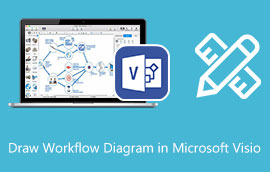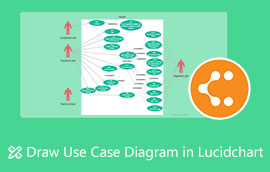Creating a Value Stream Mapping: Learn the Process Using Tools
Picture yourself making your business operations smoother, cutting unnecessary steps, and getting things done faster. Value Stream Mapping (VSM) is a handy tool that can help you do that. It lets you see how materials, information, and work move through your processes, clearly showing what's happening and pointing out where you can improve things. This detailed guide will show you how to make a Value Stream Map (VSM). We'll talk about why VSM is great, where you might use it, and what you need to get started. Plus, we'll give you instructions on using MindOnMap, Word, and online VSM tools to make your maps. Let's dive in and make your business operations top-notch and ready to reach new heights.

- Part 1. What is Value Stream Mapping
- Part 2. What is a Value Stream Map? Common Uses
- Part 3. How to Make a Value Stream Map: Steps
- Part 4. Component and Symbol You Can Use in Value Mapping
- Part 5. How to Evaluate the Quality of Value Stream Map
- Part 6. Useful Tools to Make Value Stream Map
- Part 7. FAQs about Value Stream Mapping
Part 1. What is Value Stream Mapping
Value Stream Mapping is a cool method from lean management that helps you improve your processes for getting a product or service to a customer. It's like a visual map that spots things going wrong or not working well so businesses can smooth their operations.
Here are the main points of the Values-Stream Map:
• It uses a flowchart-style diagram to show what's happening in a process.
• Value Stream Maps tell you what's adding value and what's not.
• It helps spot and eliminate things like waiting around, moving stuff around too much, making too much of something, and making mistakes.
• A Value Stream Map is all about making small, steady improvements over time so you can see how things are getting better.
Part 2. What is a Value Stream Map? Common Uses
Value Stream Map(VSM) are handy tools in many different areas. Here are some typical ways people use them:
• Manufacturing: Making production more efficient, reducing how long things take to make, and ensuring better quality.
• Service industries: Making services run smoother, cutting down on customer wait times, and ensuring customer happiness.
• Office settings: Improving workflows, reducing paperwork, and eliminating slow spots.
• Supply chain management: Finding where things are going wrong in the supply chain and making it easier for suppliers and customers to work together.
• Lean efforts: Helping out with lean projects by spotting and removing any steps that aren't needed.
• Improving processes: Looking for ways to keep getting better and more efficient.
Understanding how VSM works can help you determine whether it's the right tool for your needs and goals.
Part 3. How to Make a Value Stream Map: Steps
This analysis will show you how to create a VSM, from starting with the process to putting better ways of doing things in place. By finishing this guide, you'll grasp how to use VSM to improve your business processes.
Figure Out the Process: Make it clear what process you're looking at.Decide what the process covers, like where it starts and ends.
Get the Info: Collect details about the process, like its steps, how long each step takes, and any waiting or moving around. Consider using time checks or talking to people to get this information.
Make the Current State Map: Draw a simple diagram showing how things are. Include boxes for each step, arrows for how things move, and symbols for different kinds of work (like work that adds value or doesn't).
Spot the Problems: Look at the current state map to find any issues with the process. Typical problems include waiting, moving things around, making too much, having too much stuff, making too many mistakes, and not using resources well.
Plan for the Future: Make a new map showing how you want the process to be. Get rid of or make things better for the problems you found. Think about using lean ideas to make things run smoother.
Put the Plan into Action: Make a plan to start making the changes from the future state map. Monitor how things are going and make any needed changes.
Keep Getting Better: Use VSM to keep improving the process. Keep checking and updating the VSM to see how the process changes.
By doing these things, you can create a useful VSM that will help you spot ways to improve and make your processes work more smoothly.
Part 4. Component and Symbol You Can Use in Value Mapping
To make a good VSM, you must understand how the parts and symbols for different tasks and processes work. In this part, we will look at the main pieces that go into a VSM, giving you a simple rundown of what they're all about and how to use them. By getting the hang of these pieces, you can make your VSMs more detailed and helpful. Let's learn about the value stream mapping symbols and components.
Components of Value Stream Mapping
• Boxes: Think of these as the steps or tasks in the process.
• Arrows: Show how materials or info move from one step to another.
• Data: This is info about the process, like how long it takes, how much there is, or how far things go.
• Symbols: There are different symbols for various kinds of tasks, like:
◆ Functions that add value: These directly help improve the product or service for the customer.
◆ Tasks that don't add value: Tasks that don't make the product or service better.
• Waste: Symbols for different kinds of waste, such as waiting around, moving stuff around too much, making too much, having too much stuff, moving stuff around too much, making mistakes, and not using resources well.
Symbols
• Triangle: Shows a step or task.
• Diamond Points out a choice.
• Arrow: Shows how things or info moves.
• Inventory: A triangle with a line across it.
• Wait: A line slanted with an arrow.
• Transportation: A line with arrows at both sides.
• Inspection: A circle with an eye inside.
• Motion: A person icon walking.
• Overproduction: A bunch of symbols for too much stuff.
• Defects: A symbol for a mistake or problem.
You can create a simple and helpful VSM that explains your process using these parts and symbols.
Part 5. How to Evaluate the Quality of Value Stream Map
A well-made Value Stream Map (VSM) is a great way to improve your processes. But, to ensure your VSM works well, you must check how good it is. By carefully looking at how accurate, clear, complete, insightful, and on-point your VSM is you can determine what needs to be fixed and get the most out of it. We're going to look at the main things to check for when you're evaluating how good your VSM is, giving you a full list to make sure your maps are useful and easy to understand. Let's figure out how valuable your VSM is.
Accuracy
• Ensure the data you use to make the VSM is correct and current.
• Check that the VSM shows what the process looks like now.
Clarity
• The VSM should be simple to get and look good.
• Make sure you use symbols correctly and keep them consistent.
• Everything should have clear labels that are easy to read.
Completeness
• Ensure you have all the important steps and tasks in the VSM.
• Make sure you've found all the different kinds of waste.
Insights
• The VSM should tell the difference between things that add value and things that don't.
• Find out where the process could be faster and faster.
• The VSM should point out where you can improve it.
Alignment with goals
• Ensure the VSM fits the company's big goals and plans.
By examining your VSM through these points, you can determine its quality and spot areas for improvement.
Part 6. Useful Tools to Make Value Stream Map
Value Stream Mapping (VSM) is a great way to see and understand how things work. To make good VSMs, you can use different software tools. This part will show you three popular choices: MindOnMap, Word, and Creately. Every tool has good and bad points, so picking the one that fits what you need and like the most is key. Let's check out these tools and what they're good at.
Option 1. MindOnMap
MindOnMap is a cool mind-mapping app that helps you sort, see, and share your thoughts. It's got a user-friendly and easy-to-use layout for making pictures out of your info, which makes it great for coming up with ideas, planning projects, and keeping track of what you know. Even though it's not made just for making Value Stream Maps (VSM), you can get pretty creative.
Secure Download
Secure Download
Key Features of VSM with MindOnMap
• The layout lets you show how materials and info move through a process.
• Use shapes for tasks and lines to show how they connect.
• Use different colors to tell apart tasks that add value and those that don't.
• Write down details about certain steps or extra info.
• You can team up with others right on the map, making it great for collaboration or brainstorming.
• You can share your mind maps with others in different ways, like pictures, PDFs, or files in Microsoft Office.
Download and install MindOnMap. Make sure to sign in using your current account. If you don't have one, don't worry—you can create a new one for free. After you're in, hit the +New button and select the Flowchart.
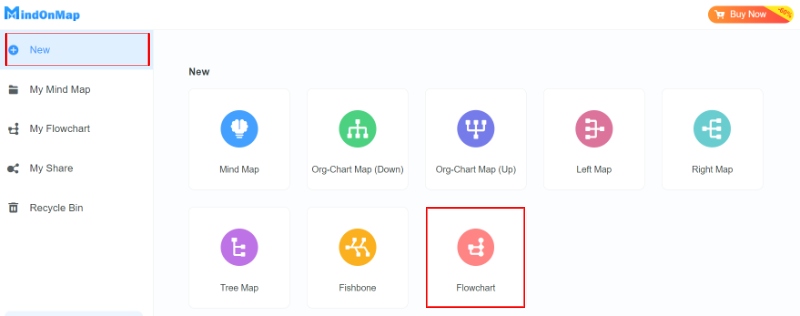
Start by figuring out the main steps in your value stream. Use the shapes in the General toolbar and Flowchart. Put these shapes in the order they happen and link them with arrows to show how they flow.
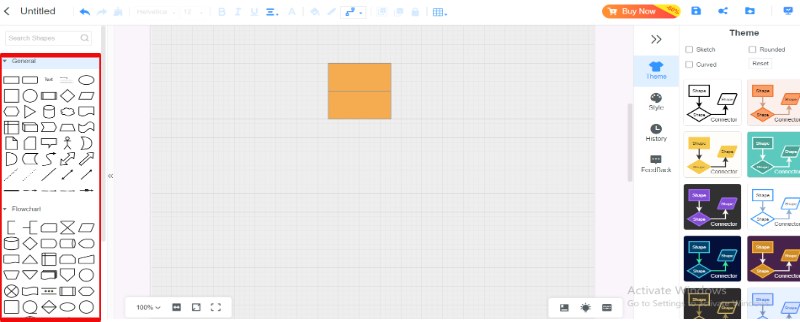
Put data boxes below each step to include important details like the time it takes to complete a cycle, the time it takes to get something ready to go, the amount of stock we have, or anything else. Use different colors or symbols to distinguish between activities that add value and those that don't.
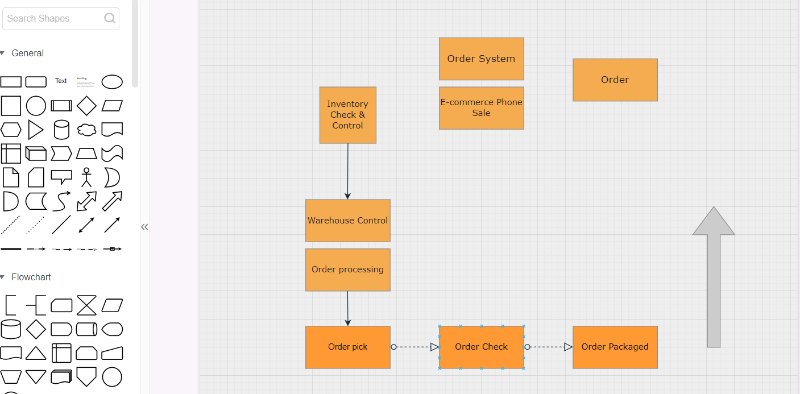
Check the map to see if everything looks right and complete. Make sure all the steps, how information moves, and data are correct.
Once you've completed the VSM, remember to save your project. You can share your work by clicking the Share button.
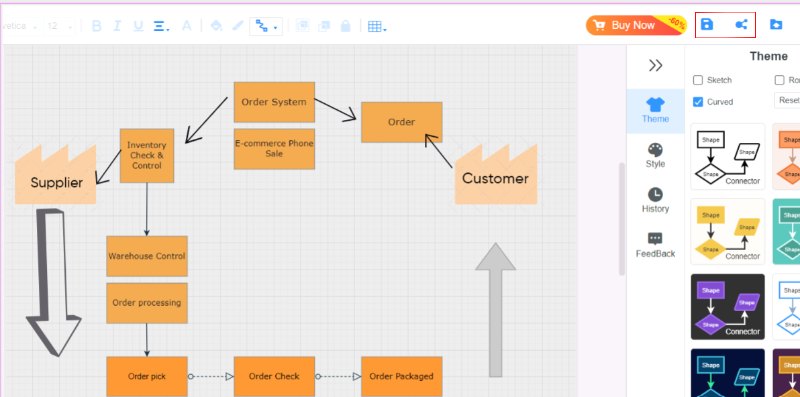
Following these procedures, you can create a detailed and useful Value Stream Map with MindOnMap. This tool simplifies mapping and offers several features that help you analyze and improve your product or service's value stream.
Option 2. Microsoft Word
Microsoft Word, a handy document tool, can also whip up simple Value Stream Maps (VSMs). Even though Word is mostly known for making documents, it has many features like shapes, SmartArt, and diagram tools that let you draw out processes like value stream mapping. Even though it might not be as focused on special VSM software, Word is easy to use and popular, so it's a good choice for people who just need to make a basic VSM without any extra software. Using Word's drawing tools, you can sketch out the steps of a process, how information moves around, and the important numbers to look at and improve your value streams.
First, open Microsoft Word and create a new, empty document. Click the Insert tab and choose the Drawing option.
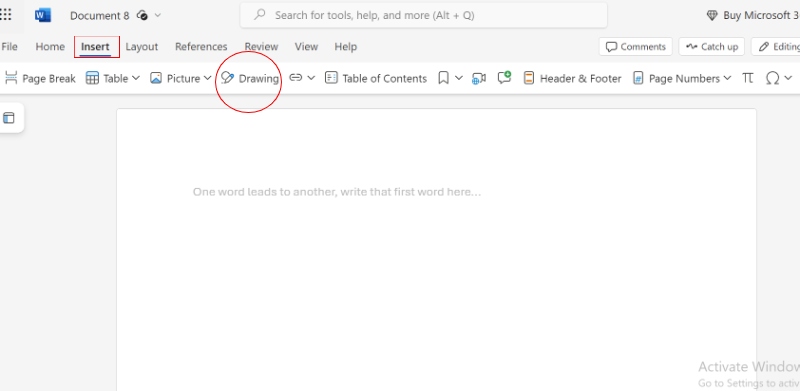
Click the Shapes button and pick out rectangles or any other shape that best fits your process steps. Then, just click and drag to place these shapes on your document, arranging them in the order that shows how your process flows.
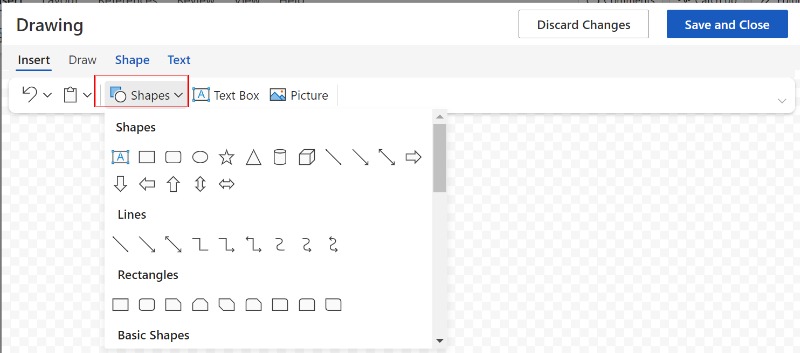
To label each step of your process, double-click on a shape, which will add Text. Type in the name of the process or step inside the shape. You can also highlight the text and play around with the font, size, and alignment.
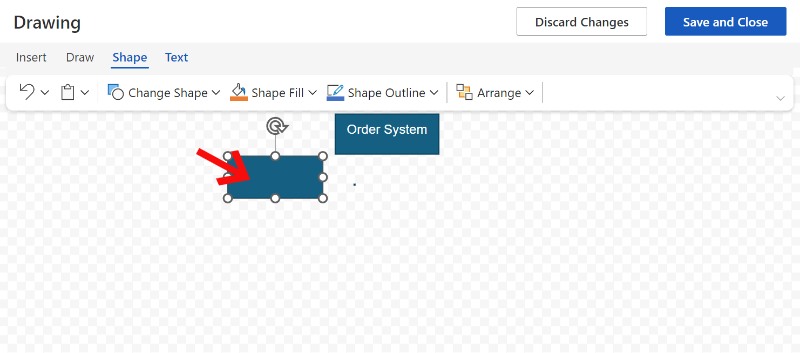
Add symbols like inventory triangles, arrows, or icons for customers or suppliers by using various shapes or inserting images if necessary. You can find these icons or symbols online and add them as images.
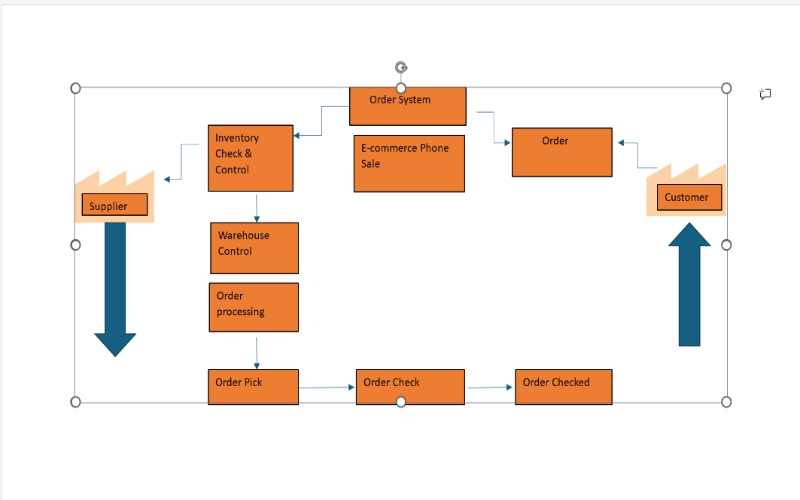
Review your VSM to ensure everything is labeled correctly and in the right place. Make any necessary tweaks to the layout to make it easier to understand. Then, hit File Save As to save your document. You can save it in Word format or export it as a PDF for easier sharing.
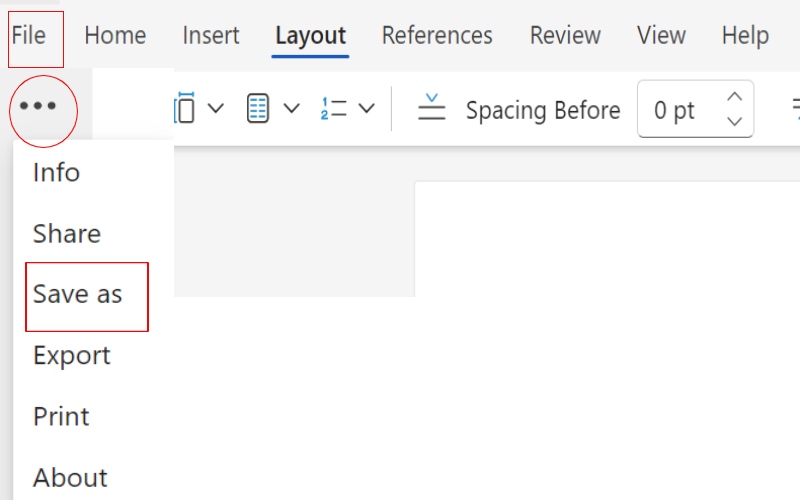
Option 3. Creately
Creately is a website that makes creating diagrams, flowcharts, and other visuals easy. It's great for teams because it lets everyone work on the same diagram simultaneously, called real-time collaboration. Creately has a huge collection of shapes and templates perfect for all kinds of diagrams, like Value Stream Mapping, so it's ideal for people who know what they're doing.
Go to the Creately website and either sign up for an account or log in. After logging in, click on Create New and pick New Document. You can look for a Value Stream Mapping template or start from scratch.
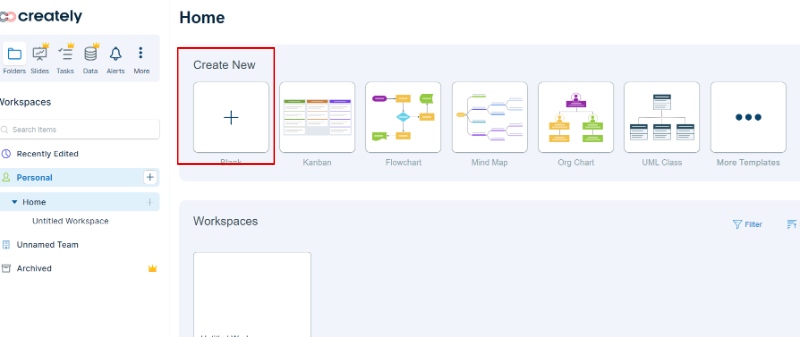
Creately has some ready-made templates for VSM. If you're short on time, you can choose one that fits your needs and tweak it to your liking. Use the shapes panel on the left side of the screen to drag and drop process boxes onto your canvas. Label each box with the process step.
Once you're happy with your VSM, save it to your Creately account. You can also send it out in formats like PDF, PNG, or SVG for easy sharing and printing.
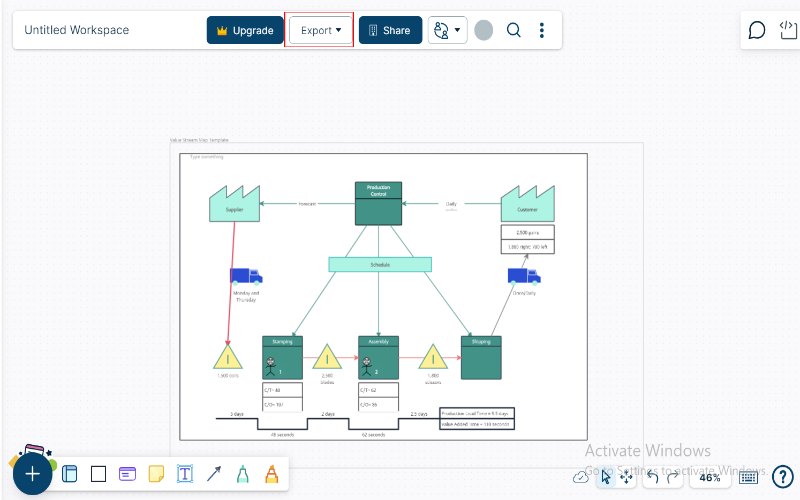
Part 7. FAQs about Value Stream Mapping
What are the three main components of VSM?
The three main components of a Value Stream Map (VSM) are process flow, information flow, and timeline. Process Flow is the steps to make a product or provide a service. Information Flow is about how data and instructions travel through the whole process. A timeline shows when things happen, like how long it takes to do something and how long you must wait for the next step. Together, these parts give you a full picture of how everything works so you can figure out how to improve it.
Is value stream mapping lean or Six Sigma?
Value Stream Mapping (VSM) is a tool from the Lean side that helps you see and make your processes more efficient by spotting and eliminating waste. Even though it's usually linked to Lean, you can also use VSM in projects that follow the Six Sigma approach to find out where things are going wrong, especially when you're trying to figure out what you're doing and how well you're doing it during the Define and Measure parts of the DMAIC cycle.
How do I create a VSM in Excel?
To make a Value Stream Map (VSM) in Excel: Get Started: Open a new Excel sheet and tweak the column and row sizes. Draw the Process Flow: Use shapes to make the steps and line them up in order. Link the Steps: Use arrows to show how the steps are connected. Add How Information Moves: Put in text boxes or shapes to show how information flows and link them with arrows. Throw in Key Data: Add important stats like how long each step takes. Add a Timeline: Put a timeline at the bottom to show each step's length. Style and Finish: Make the VSM easy to read, then hit save and share. This method lets you make a simple, editable VSM with Excel's tools.
Conclusion
It's super important to check how good a Value Stream Map is to make sure it shows what the process is like and points out where it could improve. There are lots of tools you can use, like MindOnMap, Microsoft Word, and Creately, to make VSMs, and each one has its cool features to make the mapping easier. In short, a VSM is a handy tool for businesses looking to improve their processes and keep getting better at them.









